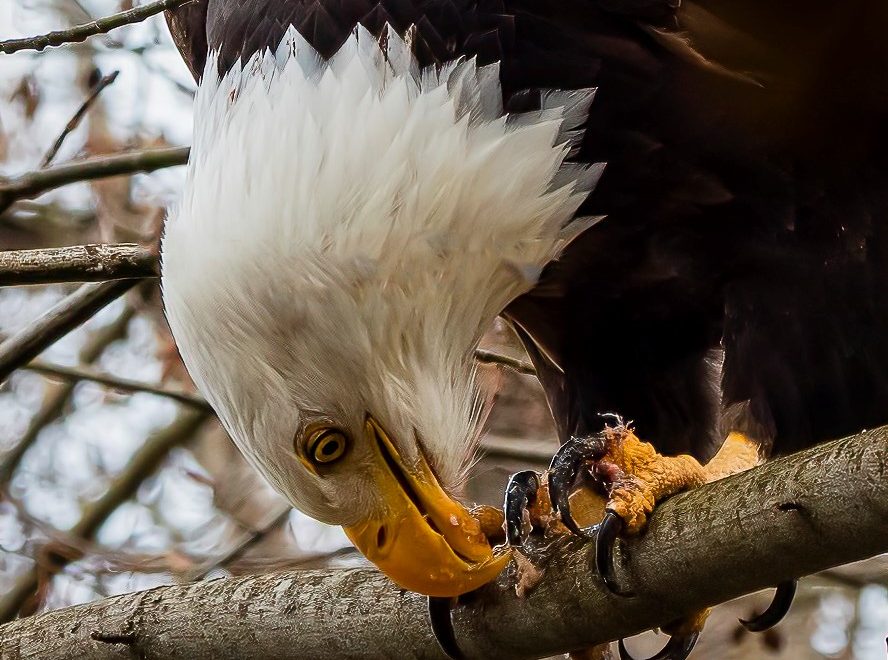
Big, Bald, and Beautiful
Photo Credit: Mary SwartzTaken from the Olympic Discovery Trail
Bald Eagles, a species once listed as endangered, are now considered a species of least concern. Washington is home to one of the largest concentrations of bald eagles in the contiguous United States. Clallam County hosts one of the highest densities of bald eagles in Washington. Late winter is one of the best times to see bald eagles. In other words, it’s time to get your eagle eyes on and tune into the world of these wondrous and majestic soaring birds!
The most critical habitat factors associated with the success of this large predator are adequate food supply, and the availability of nest and perch trees. Breeding eagles require large trees near open water. In Washington, 99 percent of all bald eagle nests are located within one mile of a large body of water (rivers, lakes, and marine shorelines.) Areas with high density presumably reflect high quality habitat and can carry nesting pairs spaced every few miles. According to Washington Department of Fish and Wildlife, Clallam County averages about 2.8 miles of shoreline per active nest.
Bald eagles are present year-round throughout the Puget Sound region, as migrants or residents. Resident birds will remain on their territories year-round. The migratory populations disperse by late summer when they head north to take advantage of additional seasonal food supplies (salmon runs) in coastal British Columbia or southeast Alaska. They return to Washington by January to secure their territory and initiate nesting activities.
Like with all species, breeding begins when preferred protein sources are abundant. In winter, bald eagle prey, such as wintering waterfowl and winter steelhead runs, are concentrated near the shorelines. Success of this bird of prey may also be attributed to flexibility in diet, and opportunistic foraging strategies. Few bird species eat as wide of a variety of food as the bald eagle. They will hunt live food but are also effective scavengers willing to feed on decayed flesh such as spawned salmon. Their large size and aggressive behavior also make them powerful kleptoparasites, capable of stealing prey from other raptors, or even gulls, loons, and mergansers. The proud national bird of the United Sates, and a character of a wildlife conservation success story. The abundance of bald eagles to marvel at on the Olympic Peninsula is just one more reason to love where you live.

